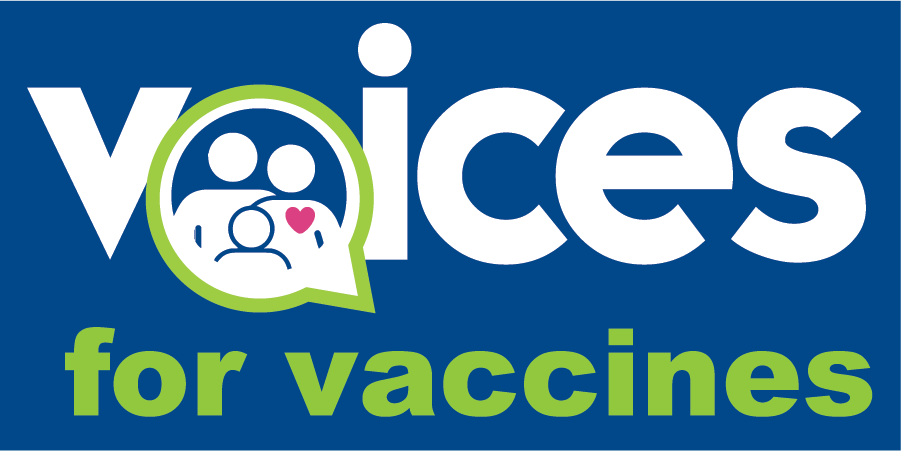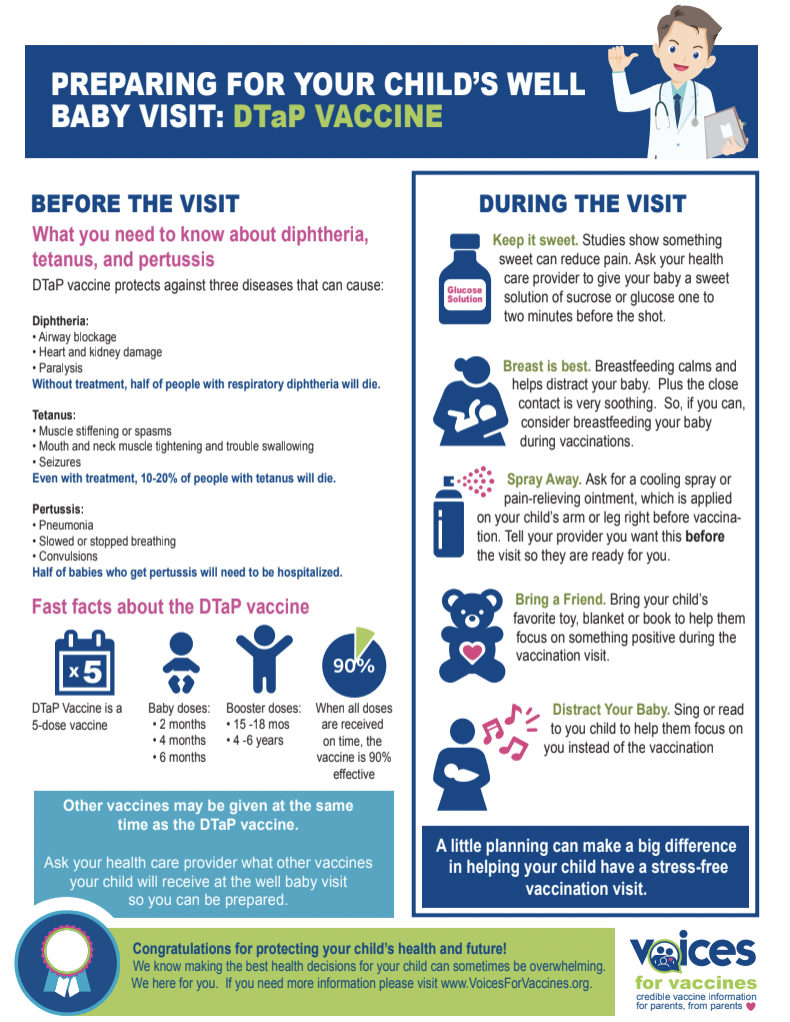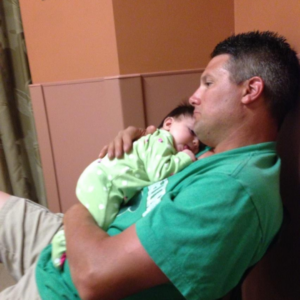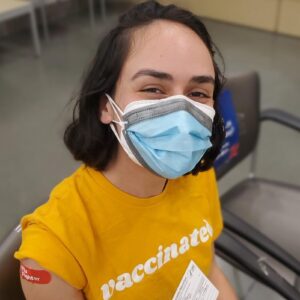DTaP (Diphtheria, Tetanus, Pertussis) Vaccine
What are diphtheria, tetanus, and pertussis?
Diphtheria is a serious bacterial infection that is spread from person to person, usually through coughing or sneezing. The bacteria make a toxin that kills healthy tissue and most frequently affects the respiratory system and skin. Respiratory diphtheria causes a sore throat, swollen glands, and weakness. Cutaneous (skin) diphtheria causes open sores.
Tetanus (sometimes called Lockjaw) is an infection caused by a bacterium that is found in the environment (like soil and manure). A person becomes infected through a puncture wound, serious burn, or more rarely, a serious bone fracture where the broken bone is exposed. The infection causes muscle spasms and stiffness. Breathing can be affected by these symptoms.
Pertussis, or Whooping Cough, is a bacterial infection that causes violent, uncontrollable coughing and difficulty breathing. It is sometimes called the 100-day cough for its long-lasting effects. Pertussis can affect anyone but is extremely serious and sometimes deadly for babies under one year of age.
What are the risks from diphtheria, tetanus, and pertussis?
If the diphtheria toxin gets into the bloodstream, diphtheria can cause heart, nerve, and kidney damage as well as paralysis. Without treatment, 50% of people with respiratory diphtheria will die. Even with treatment, 10% will die.
Tetanus can cause painful muscle contractions, which can result in bone fractures. It can also affect your lungs, resulting in pneumonia or blood clots that lead to blockages of the arteries in the lung. Treatment can be long and complicated. 10-20% of people with tetanus will die, even with treatment.
Half of the babies who get pertussis will need to be hospitalized. Almost 25% of babies with pertussis will get pneumonia and about 60% will have slowed or stopped breathing. 1 in 100 babies will die.
How effective is the DTaP vaccine?
Children should get 5 doses of DTaP. If they do, 9 out of 10 kids are fully protected against diphtheria, tetanus, and pertussis.
Before there was a vaccine to prevent diphtheria, it was the leading cause of death in children in the U.S. and the world. Today, diphtheria is extremely rare in the U.S.
The U.S began widely using the tetanus vaccines in the early 1950s. Before widespread vaccination, 1,000 people a year got tetanus. Almost half of them died. In recent years, there are only a few dozen cases each year in the U.S.
The U.S. started vaccinating against pertussis in the 1940s. Before large scale vaccination efforts, there were about 200,000 cases a year and 9,000 deaths. Today there are usually only several dozen cases a year.
How safe is the DTaP vaccine?
The DTaP vaccine is very safe. Like any vaccine or medication, there can be side effects, but they are usually mild and go away on their own. Common and mild side effects include:
- fever (about 1 in 4 children, usually after 4th and 5th doses)
- redness and swelling and/or soreness and tenderness where the shot was given (about 1 in 4 children, usually after 4th and 5th doses)
- fussiness (about 1 in 3 children, usually 1-3 days after vaccination)
- tiredness or poor appetite (about 1 in 10 children, usually 1-3 days after vaccination)
Uncommon, moderate side effects can include:
- seizures that look like the child jerking or staring (about 1 in 14,000 children)
- non-stop crying for 3 hours or more (about 1 in 1,000 children)
- fever higher than 105°F/40.5°C (about 1 in 16,000 children)
Serious side effects are extremely rare including allergic reactions (less than 1 out of one million doses). Signs of allergic reaction symptoms include hives, face or throat swelling, difficulty breathing, and fast heartbeat. Allergic reactions start quickly after vaccination, within minutes to a few hours. Other serious but very rare side effects include long-term seizures, coma, and brain damage.
When should my child get the DTaP vaccine?
The DTaP vaccine a 5-dose series, usually given at the following ages:
- 2 months
- 4 months
- 6 months
- 15-18 months
- 4-6 years
There are several different versions of vaccines that protect against diphtheria, tetanus, or pertussis, and each has different recommendations. Talk to your healthcare provider about which vaccine is best for your child and what other vaccines your family needs.
| Vaccine | Protects against: | Recommended Age Group |
|---|---|---|
| DTaP |
|
6 weeks – 6 years |
| Tdap |
|
7 – 10 years if not fully vaccinated, one dose at age 11-12, and every ten years through adulthood. |
| DT |
|
6 weeks – 6 years, not preferred |
| Td |
|
7 – 10 years + if not fully vaccinated |
| DTaP-IPV-HepB |
|
6 weeks – 6 years |
| DTaP-IPV-Hib |
|
6 months – 4 years |
| DTaP-IPV |
|
Approved for 5th DTaP and 4th IPV booster at 4-5 years |
What can I expect at a DTaP vaccine appointment?
A little research before your child’s well baby visit can go a long way to reducing your stress and concerns. Credible information helps ensure healthy choices and builds vaccine confidence.
DTaP Fact Sheet
Is your child due for a DTaP? Be prepared for your appointment by downloading our DTaP vaccine fact sheet.
Where can I get more information about the DTaP vaccine?
These organization are vaccine experts and can provide credible information:
How do I know this information is credible?
We work for parents so we make sure that parent concerns are addressed using facts and science and our content is reviewed by experts who have spent their careers studying vaccines. Learn more about how we ensure we are bringing you the best information to help you make healthy choices for your family.
Know the risks: DTaP Vaccine

Diphtheria, Tetanus, and Pertussis are serious diseases. For every 1,000,000 cases the estimated deaths are:
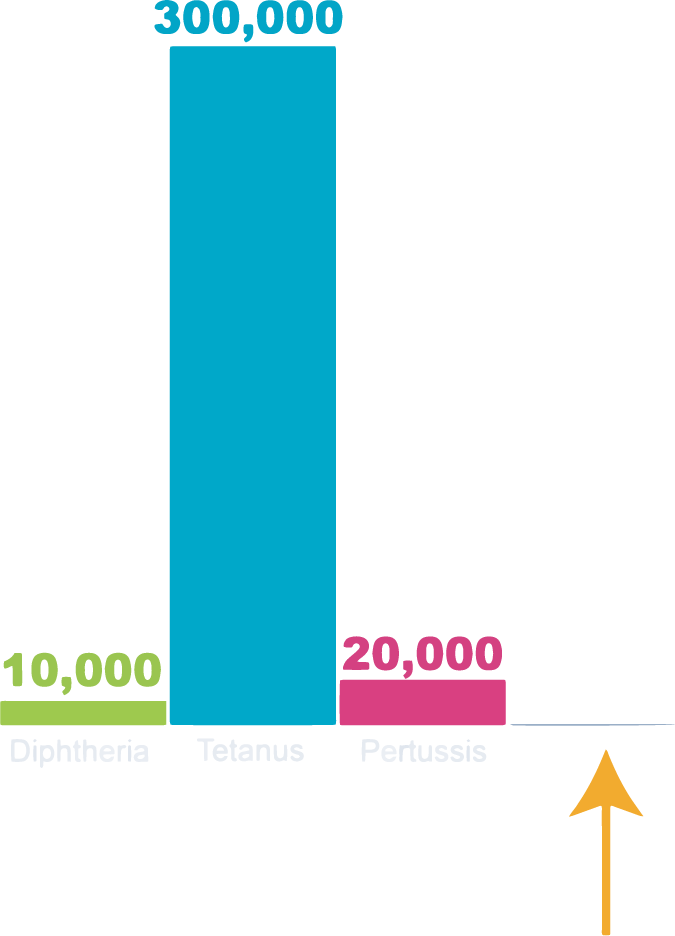
By contrast, the risk of a vaccine-related serious reaction from DTaP is infinitesimally small. Can’t see the bar? That’s because it’s only 1 in 1,000,000.
Don’t let anyone tell you different: The vaccine is ALWAYS safer than the disease

